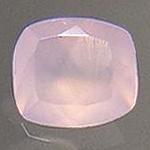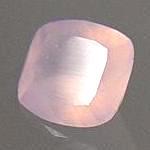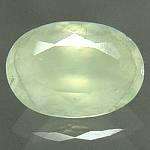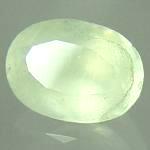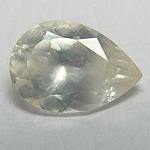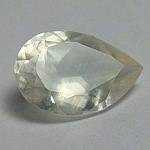|
|
|
|
Click on a letter above to view the list of gems. |
|
|
|
|
|
Smithsonite |
|
| Chemistry: ZnCO3 [Zinc Carbonate] | |
| Discovered
in 1832;
IMA
status: Valid (pre-IMA; Grandfathered). | ||
|
| ||
|
Classification |
|
|
| |
|
Carbonates | |
|
|
5 : Nitrates, Carbonates & Borates |
|
|
|
|
Crystal Data |
|
|
|
|
|
Uncommon as crystals, to 10 cm, rhombohedral and scalenohedral; additional modifying forms, with curved faces; typically botryoidal, reniform, spherulitic; stalactitic, and as cave pearls; earthy, friable, granular to porous or compact massive. |
|
|
Rarely |
|
|
|
|
|
Physical Properties |
|
|
|
|
|
[1011] Perfect, [1011] Perfect, 1011 Perfect |
|
|
Uneven to Conchoidal |
|
|
Brittle |
|
|
4.0 - 4.5 |
|
|
4.42- 4.44 (g/cm3) |
|
|
None |
|
|
Not Radioactive |
|
|
Other: |
Effervesces in warm acids |
|
|
|
|
Optical Properties |
|
|
|
|
|
White, grey, yellow, green to apple-green, blue, pink, purple, bluish grey, and brown |
|
|
Transparent to Translucent |
|
|
Vitreous to Pearly |
|
|
1.619 - 1.850 Uniaxial ( - ) |
|
|
0.223 - 0.227 (high) |
|
|
0.037 (high) |
|
|
Colorless |
|
|
|
|
|
Occurances |
|
|
|
|
|
Geological Setting: |
Commonly found as a secondary mineral in the oxidization zone of zinc ore deposits. It can also be found in sedimentary deposits and as a direct oxidization product of sphalerite. |
|
Type Locality: |
Mendips at Derbyshire, UK |
|
Year Discovered: |
1832 |
|
View mineral photos: | |
|
|
|
|
More Information |
|
|
|
|
|
| |
|
|
|
|
|
|
|
|||||||||||||||||||||||||||||||||||||||||||||||||||||||||||||||||||||||||||||||||

